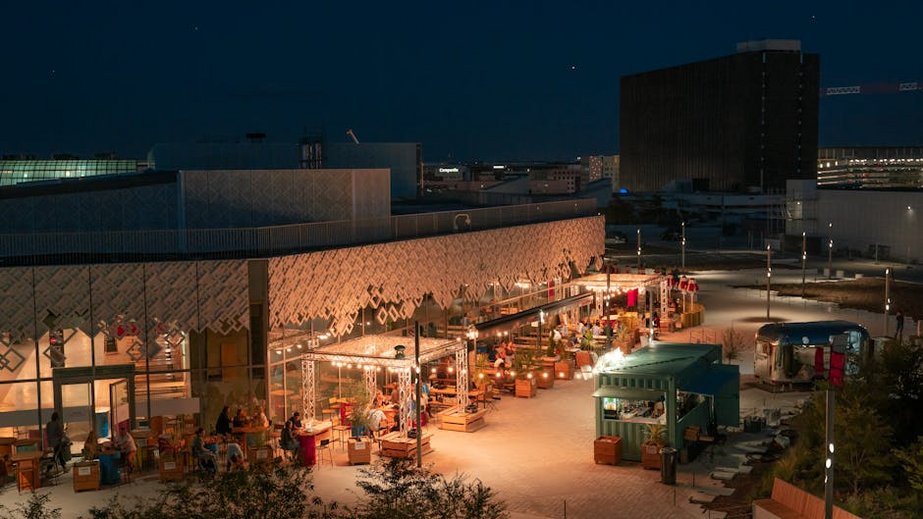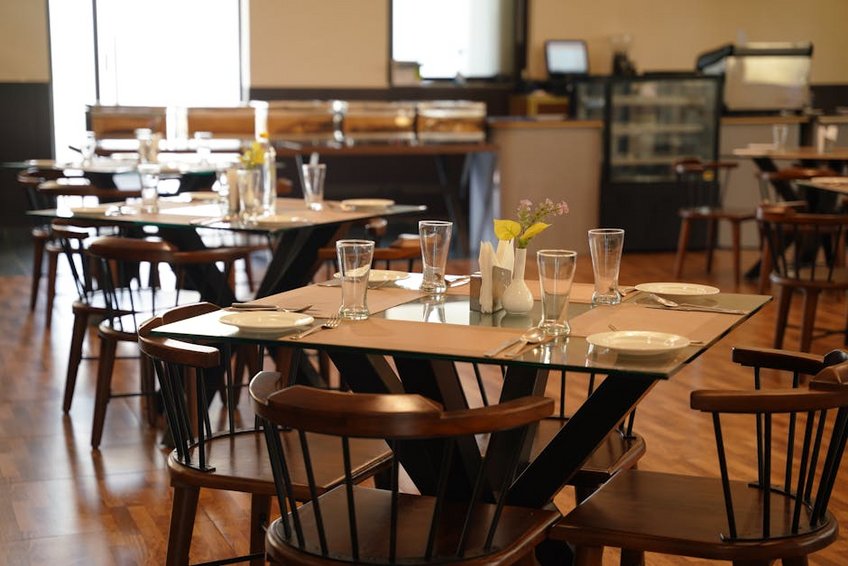Lyon Bouchon Restaurants: Your Ultimate Guide to Authentic French Dining
Exploring Lyon bouchon restaurants is like stepping into the heart of French culinary tradition, where every meal tells a story of heritage and flavor. These cozy, family-run establishments offer more than just food—they provide an immersive cultural experience that captures the essence of Lyon’s gastronomic soul. As you plan your culinary journey, you’ll discover that bouchons are not merely restaurants but institutions preserving centuries-old recipes and warm, convivial atmospheres. From the moment you walk through their characteristic red-and-white checked curtains, you’re welcomed into a world where time seems to slow down, and the focus shifts entirely to savoring each carefully prepared dish. The unique charm of Lyon bouchon restaurants lies in their ability to make every visitor feel like a local, whether you’re a first-time traveler or a returning food enthusiast. Understanding what makes these spots special will enhance your appreciation for Lyon’s rich culinary landscape and ensure you get the most authentic experience possible during your visit.
Lyon Bouchon Restaurants Essential Information – What Every Traveler Should Know
Before diving into your bouchon adventure, it’s crucial to understand what sets these establishments apart from typical French restaurants. Lyon bouchon restaurants originated in the 18th century as simple eating houses for silk workers, evolving into cherished institutions that maintain traditional cooking methods and familial service styles. Unlike modern bistros, bouchons emphasize rustic, hearty dishes made from locally sourced ingredients, often featuring offal and slow-cooked meats that reflect Lyon’s working-class roots. The atmosphere is intentionally unpretentious—think wooden tables, vintage decor, and bustling, noisy dining rooms where conversation flows as freely as the local Beaujolais wine. When visiting Lyon bouchon restaurants, you’re not just having a meal; you’re participating in a living tradition that the city takes immense pride in preserving. This deep cultural significance means that many bouchons have been operated by the same families for generations, with recipes passed down through the decades unchanged.
What Are Bouchon Restaurants? – Defining the Experience
- Bouchons are small, family-owned restaurants serving traditional Lyonnaise cuisine, characterized by their cozy atmospheres and focus on regional specialties like quenelles, andouillette, and salade lyonnaise.
- These establishments typically feature fixed-price menus offering multiple courses, including charcuterie plates, hot main dishes, local cheeses, and simple desserts, providing excellent value for money.
- Authentic bouchons are certified by organizations like “L’Association de Défense des Bouchons Lyonnais,” which ensures they maintain traditional cooking methods and decor, helping you identify genuine experiences versus tourist-oriented imitations.
- Budget-friendly bouchons typically offer lunch menus between $25-35 USD per person for three courses, making them accessible for travelers watching their spending while still providing an authentic experience.
- Mid-range options usually cost $40-60 USD per person for dinner, including appetizer, main course, cheese, dessert, and a carafe of house wine, representing excellent value for the quality and quantity of food.
- Upscale bouchon experiences can reach $80-120 USD per person, featuring premium ingredients like foie gras, truffles, and higher-end wines, while maintaining the traditional bouchon atmosphere and service style.
- Lyon Tourism Official Website
- France Today Bouchon Guide
History and Cultural Significance – From Silk Workers to Gourmet Destinations
The fascinating history of Lyon bouchon restaurants dates back to the 18th century when Lyon was Europe’s silk capital, and these establishments served as canteens for the canuts (silk workers). These hardworking individuals needed substantial, affordable meals to sustain them through long hours, leading to the development of hearty dishes utilizing less expensive cuts of meat and local produce. Over time, as Lyon’s reputation as a culinary capital grew, these humble eating houses evolved into respected dining destinations while maintaining their working-class ethos. The term “bouchon” itself possibly derives from the old French word for a bundle of straw, referencing the bunches hung outside to indicate where horses could be fed—and by extension, their drivers fed too. Today, Lyon bouchon restaurants represent a vital link to the city’s industrial past while continuing to innovate within their traditional framework, making them essential stops for understanding Lyon’s cultural identity.
Lyon Bouchon Restaurants Planning Your Trip – Timing, Budget, and Preparation
Planning your visit to Lyon bouchon restaurants requires some strategic thinking to ensure you experience them at their best while managing your travel budget effectively. The ideal approach involves balancing advance reservations at popular establishments with spontaneous discoveries of lesser-known gems, allowing you to appreciate the full spectrum of what bouchon dining offers. You’ll want to consider seasonal variations in menu offerings, as many bouchons feature dishes based on what’s fresh and available locally throughout the year. Budget-wise, Lyon bouchon restaurants represent excellent value compared to fine dining options in other European cities, with most offering complete meals at reasonable price points that include multiple courses and house wine. Preparing for your bouchon experience also means understanding the dining customs—meals are meant to be leisurely affairs, often lasting two to three hours, so avoid scheduling tight timelines around your reservations. Additionally, familiarizing yourself with basic French dining etiquette will enhance your experience and help you blend in with the local clientele.
Best Time to Visit Lyon Bouchon Restaurants – Seasonal Considerations
Timing your visit to Lyon bouchon restaurants can significantly impact your experience, with each season offering distinct advantages for food-focused travelers. Spring (March to May) brings pleasant weather and seasonal specialties like fresh asparagus and morel mushrooms appearing on bouchon menus, while the city is less crowded than peak summer months. Summer (June to August) sees Lyon at its most vibrant, with outdoor seating available at some bouchons, though you’ll need to book further in advance due to tourist demand. Autumn (September to November) is arguably the ideal time for bouchon enthusiasts, as this is when game dishes and forest mushrooms feature prominently, and the annual wine harvest influences menu offerings. Winter (December to February) offers cozy, intimate bouchon experiences perfect for cold weather, with hearty stews and preserved meats taking center stage, though some smaller establishments may have reduced hours during holiday periods.
Budget Planning and Costs – Dining Options for Every Wallet
Essential Preparation Checklist – Before Your Bouchon Visit
Preparing for your Lyon bouchon restaurants experience involves more than just making reservations—though booking tables 2-3 weeks in advance for popular spots is highly recommended. You’ll want to research specific dishes beforehand since bouchon menus often feature traditional terms and ingredients that might be unfamiliar to international visitors. Learning a few basic French phrases related to dining will greatly enhance your interaction with staff, as English proficiency varies across establishments. Dress comfortably but neatly—while bouchons are casual, they’re not as informal as fast-food venues, and looking presentable shows respect for the tradition. Bring cash as some smaller bouchons may not accept credit cards, and be prepared for potentially limited vegetarian options since the cuisine is heavily meat-focused. Finally, approach your bouchon meal with an adventurous palate and plenty of time to savor each course without rushing.

Lyon Bouchon Restaurants Top Attractions and Activities – Must-Visit Dining Experiences
When exploring Lyon bouchon restaurants, you’ll discover that each establishment offers its own unique character and specialty dishes, making it worthwhile to visit several during your stay. The most famous bouchons cluster in Vieux Lyon (the Old Town) and Presqu’île areas, where historic settings enhance the traditional dining experience with cobblestone streets and Renaissance architecture as your backdrop. Beyond the food itself, part of the attraction lies in observing the theatrical element of service—the bustling energy of waitstaff navigating tight spaces, the sounds of kitchens working at full capacity, and the convivial hum of satisfied diners. Many bouchons also function as informal cultural hubs where you might overhear local debates about football or politics, giving you genuine insight into Lyonnaise life beyond the tourist trail. Balancing visits between well-known institutions and hidden neighborhood spots will give you the most comprehensive understanding of why Lyon bouchon restaurants remain so beloved by both locals and visitors alike.
Must-See Bouchon Highlights – Iconic Establishments
Certain Lyon bouchon restaurants have achieved legendary status through decades of consistent quality and authentic atmosphere, making them essential visits for first-time travelers. Le Musée typically tops most lists with its faithfully preserved 1950s interior and exemplary versions of classics like tablier de sapeur (breaded tripe) and cervelle de canut (herb cheese spread). Daniel et Denise stands out for its theatrical presentation and exceptional meat dishes, particularly their slow-cooked beef cheeks and pike quenelles in crayfish sauce. Café des Fédérations offers perhaps the most archetypal bouchon experience with its cramped, noisy dining room covered in vintage posters and memorabilia, serving family-style platters that encourage conversation with fellow diners. These established venues provide benchmark experiences against which you can compare other bouchons, helping you appreciate the nuances that make each unique while understanding the core elements that define the tradition.
Hidden Gems and Local Favorites – Beyond the Guidebooks
Venturing beyond the most famous Lyon bouchon restaurants reveals wonderful neighborhood establishments where you’ll often find more available tables and equally compelling food at slightly lower prices. In the Croix-Rousse district, Le Garet has been serving traditional Lyonnaise fare since 1878 with minimal changes to its interior or menu, attracting a loyal local clientele who appreciate its understated excellence. Le Poêlon d’Or, tucked away near Place Bellecour, offers a more intimate setting with only a handful of tables but consistently excellent preparations of dishes like andouillette sausage and gratin dauphinois. For a slightly modernized take on bouchon traditions, Le Bouchon des Filles in the 1st arrondissement maintains the cozy atmosphere while incorporating contemporary touches and occasionally vegetarian options. Discovering these lesser-known spots often leads to more personalized service and opportunities to chat with owners, providing deeper insight into what keeps the bouchon tradition alive and evolving.
Lyon Bouchon Restaurants Practical Travel Information – Logistics and Accommodation
Navigating the practical aspects of visiting Lyon bouchon restaurants ensures a smooth, enjoyable experience from arrival to departure. Lyon’s compact city center makes it relatively easy to move between different bouchon districts, with excellent public transportation including metro, tram, and bus systems that connect major neighborhoods. When planning your bouchon itinerary, consider grouping restaurants by location to minimize travel time between meals—the Presqu’île area between the Rhône and Saône rivers contains particularly high concentrations of quality options. Accommodation choices should balance proximity to bouchon clusters with other sightseeing priorities, though staying within walking distance of several restaurants allows for spontaneous decisions when cravings strike. Understanding reservation protocols is crucial since many popular bouchons fill quickly, especially for weekend dinners, requiring advance planning through their websites or phone calls in French or basic English. Additionally, familiarizing yourself with Lyon’s dining schedule—with lunch typically from 12-2 PM and dinner from 7:30-10 PM—helps avoid disappointment from arriving during closed hours.
| Restaurant Category | Features and Specialties | Price Range (USD) |
|---|---|---|
| Traditional Bouchons | Family-owned, historic decor, classic Lyonnaise dishes like quenelles and andouillette | $25-45 per person |
| Modern Bouchons | Updated traditional recipes, contemporary interiors, occasional vegetarian options | $35-60 per person |
| Luxury Bouchons | Premium ingredients, extensive wine lists, refined presentation of traditional dishes | $70-120 per person |


